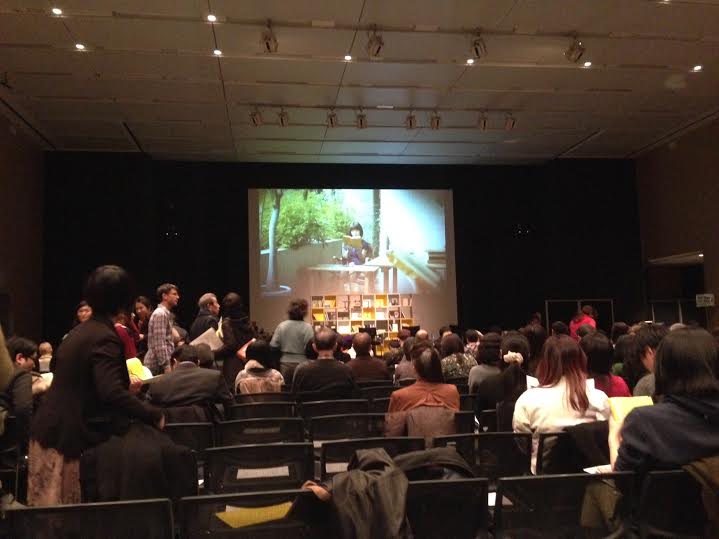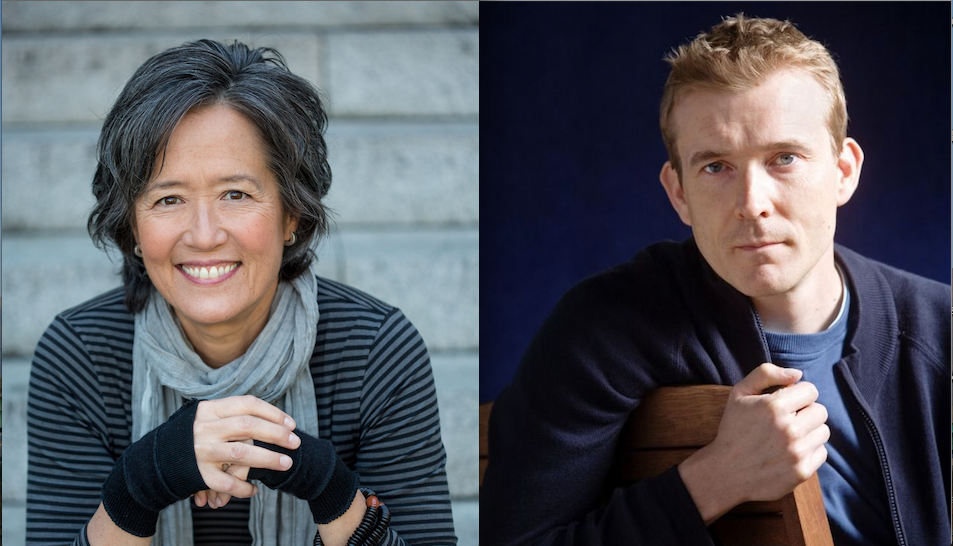On Friday, March 7th, the Tokyo literary community welcomed internationally-acclaimed authors Ruth Ozeki and David Mitchell to Academy Hills in Roppongi. Having read several of Mitchell’s multi-layered, multi-dimensional novels (including The Thousand Summers of Jacob de Zoet, which is set in Japan during the late Edo period) as well as Ruth Ozeki’s stunning tour de force A Tale for the Time Being, I was really excited to hear these two authors speak about their writing, their lives and their connections to Japan. The funniest moment was probably when Mitchell described Dejima as a “cat-flap” that allowed a trickle of information in and out of Japan during the sakoku (“closed country”) period, which he claimed was a decent metaphor for someone with jet-lag!
 Here are just a few things that the two authors shared.
Here are just a few things that the two authors shared.
On learning Japanese
David Mitchell: learning another language is good for a writer because it forces you to deal with the fact that there is always more than one way to say/write something.
Ruth Ozeki: speaking both Japanese and English leads to a sort of “split personality,” which makes coming back to Japan and speaking Japanese again feel good, like seeing an old friend.
On different characters and their voices
David Mitchell: populating your novel with different voices involves a sort of limited-level borderline personality disorder. Basically you are spending weeks on end listening to fake people having conversations in your head.
Ruth Ozeki: A Tale for the Time Being really only began once the voice of Nao [one of the two central protagonists] emerged and “spoke” her first line to the author: “Hello, my name is Nao and I’m a time being. Do you know what a time being is?”
On research and reality
David Mitchell: you have to keep the “bubble of fiction” unpopped. If the reader remembers they are reading a novel, you’ve failed. Hide your research. We writers are information smugglers. Nothing kills a book like a lecture.
Ruth Ozeki: it has to be subtle. An agenda sinks the ship. For example, in A Tale for the Time Being, we do learn a lot about Shingon and Zen from the Jiko character, but first and foremost, she is important to the main character Nao as a great-grandmother.
David Mitchell: the first person is personally more comfortable. It just solves so many problems. When you write in third person, especially with omniscience, what on earth do you keep out? First person limits you to that single filter/perspective.
Ruth Ozeki: oddly enough, the third-person protagonist in A Tale for the Time Being, who is actually called “Ruth,” is semi-autobiographical! The other protagonist, Nao, relates her story in first person through the pages of a diary.
On drafting and editing
David Mitchell: always over-write, then hack. Somehow, the hacked-out parts are sort of still there, like ghosts haunting the novel. The final novel is written on top of a layer of ghostly drafts of itself.
Ruth Ozeki: one way to draft and edit is to “cast characters” and try them out. Bring them into the novel, have them around for 50 pages or so, see how they do. If they don’t fit, kindly see them to the door.
On why they write about Japan
David Mitchell: it is a country of extremes, full of paradoxes and contrasts. Japan’s new is so new. Japan’s old is so old. There is this quiet, silent past behind all the modern hustle. Novels like antimatter such as paradoxes and contrasts because a novel can contain more than “one side.” This is why novels are generally good for peace. Walking in someone else’s shoes makes it harder to want to shoot them.
Ruth Ozeki: when you come here from abroad, Japan is a very interesting sensory experience. Writers who utilize synesthesia (i.e. using one sense to describe another) tend to find Japan very inspirational.


Thank you for sharing this write-up of a fantastic event, one of the best in an overall stellar festival program. I was in the audience as well, and would just like to share that what David Mitchell said was “Japan’s new is so new. Japan’s old is so deep.” I can only note this because personally I found it delicious when he departed from the parallel construction and described Japan’s “old” as deep.
Exciting write-up! Cool!
Thanks for your kind words! And yes, thank you for reminding me of that brilliant little turn of phrase by Mr Mitchell, as it did reflect something I think is quite true about the presence of Japan’s past in the present. Tokyo isn’t Bruges or Prague. The past doesn’t smack you in the face when you first arrive in the city. It is waiting for you under paving stones, around alley corners, in the soil of back gardens. That’s what I love about Tokyo–and Japan more broadly. That sense of discovery, unearthing something nearly, but not quite, paved over by the momentum of the present.